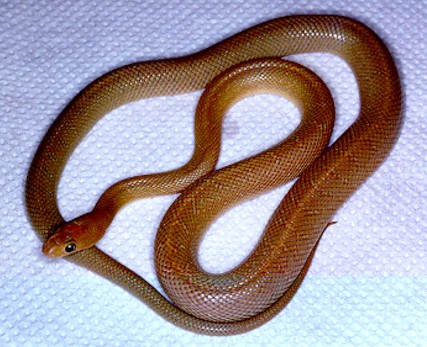
Bogertophis rosaliae (Baja Ratsnake)

Photo by Robert Bryson
Written by Paul Lynum
Common Names: Baja California Ratsnake, Baja Ratsnake, Santa Rosalia Ratsnake
Scientific Name: Bogertophis (Elaphe) rosaliae
Range: Extreme southern California (Imperial County) southward along the peninsular ranges to the cape of Baja California. Also found on Isla San Marcos, as well as other small miscellaneous islands in the Sea of Cortez.
Habitat: A resident of intolerable habitat. Most specimens have been found in or near large lava rock fields in southern Baja. Also found in dry ravines and canyons. Some specimens have been found near oases and springs. Found in the large granite boulder fields in northern Baja and southern California.
Behavior: This secretive snake is cheifly nocturnal. Only a few specimens have been observed during daylight hours. In southern Baja where this snake is most common, it has been found crossing highways and old back roads that wind through rocky hills and canyons. Most active after the summer rains in September.
Breeding: The Baja Rat tends to breed late in captivity, much like its close relative the Trans-Pecos Ratsnake, Bogertophis (Elaphe) subocularis. Breeding usually starts in May or June with eggs being laid in July or August. Hatching occurs in late September or October. I once found a newly hatched snake with a umbilical cord still attached to its underside crossing a road near the town of Mulege, Baja California, in late September.
Size: Hatchlings range from 10 to 16 inches in length. Adults range between 36 and 72 inches, with most being about 60 inches.
Coloration:
Wild Types:
Variable. Most specimens are uniform brown that is in some cases very attractive. Some snakes are a dull brown to a light beige. Juvenile pattern consists of faint light crossbars on a brown or cinnamon ground color.
Captive Cultivars:
Axanthic: A color variation in which the yellow or reddish coloration is lacking is being bred in limited numbers. These snakes are a uniform grey or silvery coloration.
Lit. Cited:
Lynum, Paul. 1993-1997. Field and natural history notes on the Baja California Ratsnake. unpublished.